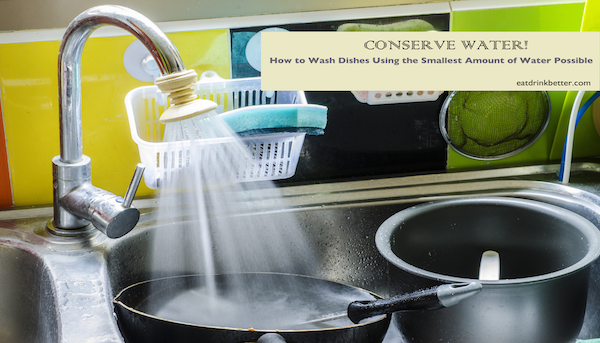
Published August 8, 2014 | by Jill Ettinger


There is a drought in California to go now. We do everything that we here to save water, but no matter where you live, there's really no reason to waste this valuable vital resource. How much washing is a game-changer in this situation.
You're probably thinking "but I know how to wash the dishes now." It is not rocket science, right? Take the dirty dishes and make them fit, usually by any means necessary. But for most of us, which is in turn on the water and not turn off until we stopped completely with the completion of our dishes. It is not technically in the wrong direction, but certainly not the right way to do the dishes to water conservation in mind.
And until we have a super-molecule laser sci-fi cannon to dishes for us without a drop of water, we still have to use that area.
How to wash dishes with less water
Step one:
Learn how food without residues. I do not suggest you lick your plate, but if no one is watching ...
Step two:
Scrape excess food in the compost or garbage. This is obvious, but sometimes we forget or lazy and blast everything with spray. Your credit you for adding nitrogen-rich foods like coffee grounds. What can not be composted (very fatty foods, for example) can help speed up the decomposition process in the local landfill.
Exposed for products or bacteria very heavy and sticky help products of animal origin, stoves with vinegar or salt kill germs and easy cleaning.
Step Three:
Stack your dirty dishes by - no - the sink. Make sure your sink is clean. This can be done with a little vinegar and wipe with a towel. There is no water!
Step four:
Sparkling clean sponge, so it is a good foam with foam soap naturally court. You will need a little water to moisten the sponge, but not much! Start cleaning the kitchen and in the soap wash food particles. Remove the counter next to the sink, foam and put the rest in soap dishes in the sink covered clean.
Step five:
Turn your rinse water and! Use gravity to your advantage; First rinse large items, so that the drop of clean water and clean to small objects. That's it!
Note: When the hot water takes a while to warm up, make sure you collect the cold water faucet outlet. Use it, your garden or houseplants or cooking water. And it's actually one of the applications of cold water to wash dishes (and hands). Is not water and soap kills germs and if the courts and the hands soap, you can use cold water.
Image via Shutterstock dishes
Keep up with the latest news from the sustainable food by signing up for our free newsletter. Click here to register!

No comments:
Post a Comment